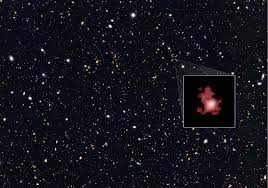Galaxy GN-z11:

The spectroscopic results from galaxy GN-z11 identified and confirmed that there is the complete absence of dust particles from its surroundings for an interim period despite possessing a very high star formation rate.
- The process of star formation and the subsequent stellar evolution inevitably generates massive amounts of dust and makes the host galaxy opaque to some extent due to the apparent view of a thick veil around it.
- This phenomenon has been missing in GN-z11’s behaviour, leaving astronomers amazed beyond measure.
- Galaxy GN-z11 was discovered in 2015 by the Hubble Space Telescope.
- It is located approximately 32 billion light years away from the Earth.
- Galaxy is a huge collection of gas, dust, and billions of stars and their solar systems. A galaxy is held together by gravity.
- A galaxy starts to form through the accumulation of hydrogen gas in the form of a very large cloud called a nebula and this growing nebula develops localised clumps of gas.




